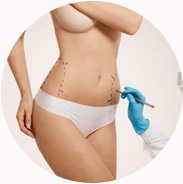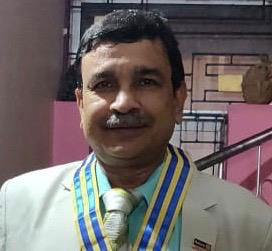Post Taruma Reconstruction:
Traumatic orthopedic injuries can be very painful and difficult to treat. Injuries may not heal properly or at all resulting in deformities and complications. In such cases, it is important to seek out a trusted orthopedic trauma surgeon. At Prof. Dr. Prasanta Kumar Bhattacharyya, our physicians have pursued fellowship training in a variety of orthopedic sub-specialties including Orthopaedic Traumatology and Post-traumatic Reconstruction.
Below information about common post-traumatic orthopedic conditions we treat .
Deformity
When a bone is fractured and heals improperly, this can result in a deformity. Deformities can result in chronic pain, limited functionality and mobility and, in some cases, severe physical disability.
At Prof. Dr. Prasanta Kumar Bhattacharyya, our doctors employ the latest surgical treatments to reconstruct even the most complicated bone and joint deformities.
Nonunion
With modern treatment methods, most broken bones (fractures) heal without any problems. After a broken bone is treated, new bone tissue begins to form and connect the broken pieces.
Some broken bones do not heal even when they get the best surgical or nonsurgical treatment. In some cases, certain risk factors make it more likely that a bone will fail to heal. When a broken bone fails to heal it is called a "nonunion." A "delayed union" is when a fracture takes longer than usual to heal.
Bone Healing
For bone healing to happen, the bone needs adequate stability and blood supply. Good nutrition also plays a role in bone healing.
Stability
All treatment of broken bones follows one basic rule: the broken pieces must be put back into position and prevented from moving out of place until they heal. Some fractures can be held in position with a cast. Some fractures require surgical fixation with devices like screws, plates, rods and frames.
Blood supply
Blood delivers the components required for healing to the fracture site. These include oxygen, healing cells, and the body's own chemicals necessary for healing (growth factors). The blood supply to the injured bone usually comes back on its own during the healing period.
Nutrition
A broken bone also needs adequate nutrition to heal. Eating a healthy and well-balanced diet that includes protein, calcium, vitamin C, and vitamin D is the best way to ensure adequate nutrition; dietary supplements that go beyond the daily requirements are not effective. (The rare exception is the severely malnourished patient with many injured organs. In this case, the doctor will discuss dietary guidelines and make recommendations for adding dietary supplements.)
Causes
Nonunions happen when the bone lacks adequate stability, blood flow, or both. They also are more likely if the bone breaks from a high-energy injury, such as from a car wreck, because severe injuries often impair blood supply to the broken bone.
Risk Factors
Several factors increase the risk of nonunion.
1. Use of tobacco or nicotine in any form (smoking, chewing tobacco, and use of nicotine gum or patches) inhibits bone healing and increase the chance of a nonunion
2. Older age
3. Severe anemia
4. Diabetes
5. A low vitamin D level
6. Hypthyroidism
7. Poor nutrition
8. Medications including anti-inflammatory drugs such as aspirin, ibuprofen, and prednisone. The physician and patient should always discuss the risks and benefits of using these medications during fracture healing
9. Infection
10. A complicated break that is open or compound
Osteomyelitis
Infection of the bone, called osteomyelitis, is caused by bacteria, parasites or viruses that enter the body through the blood stream and spread into the bone. Early diagnosis and treatment is critical in patients with osteomyelitis.
Infections
Orthopaedic infections can be devastating. Disease-carrying bacteria, viruses, and parasites that get into the body can destroy healthy tissue, multiply and spread through blood.
Infection of skin and other soft tissue can lead to infection of bones (osteomyelitis) and joints (septic arthritis). Without prompt treatment, orthopaedic infections can become chronic. Thus, even a small scratch on the fingertip has the potential to permanently disable your hand, or worse.
Fortunately, early diagnosis, appropriate antibiotic therapy, and surgical intervention when required can cure most infections and prevent permanent problems.
Prevention
To control the spread of infections in hospitals, doctors and nurses wear gloves and gowns and wash their hands frequently.
To prevent infections in skin wounds, follow these tips:
1. First control bleeding, and then clean the wound with soap and water.
2. Keep all foreign matter (i.e., hair, clothing, dirt and fluids) out of the wound.
3. Do not try to remove matter embedded in the wound.
4. Use sterile materials for the first dressing of the wound.
5. See your doctor for final, definitive cleaning of the wound.
Risk Factors
Having certain chronic diseases puts you at greater risk for infections. Examples include HIV, rheumatoid arthritis, diabetes mellitus, hemophilia, and sickle cell anemia. You can become infected through direct contact with an infected person or through indirect contact, as from a contaminated object.
Infections enter the body through breaks in the skin, especially puncture wounds and other injuries that are difficult to clean.
Sometimes, joint infections develop from an internal hip or knee replacement device (prosthesis). The knee is the most commonly infected joint.




